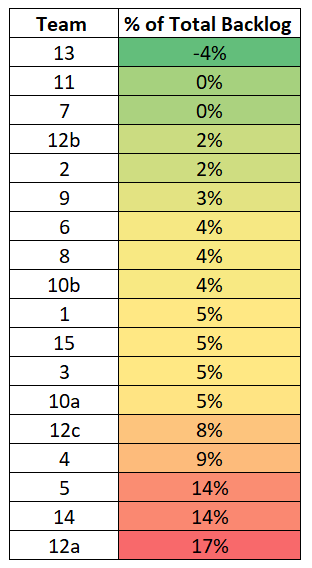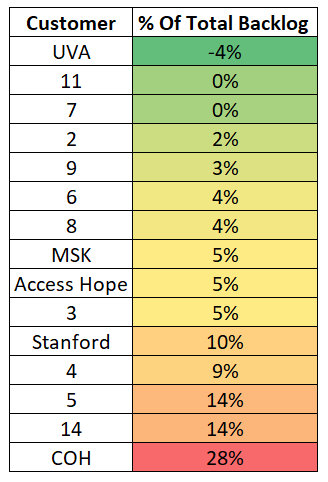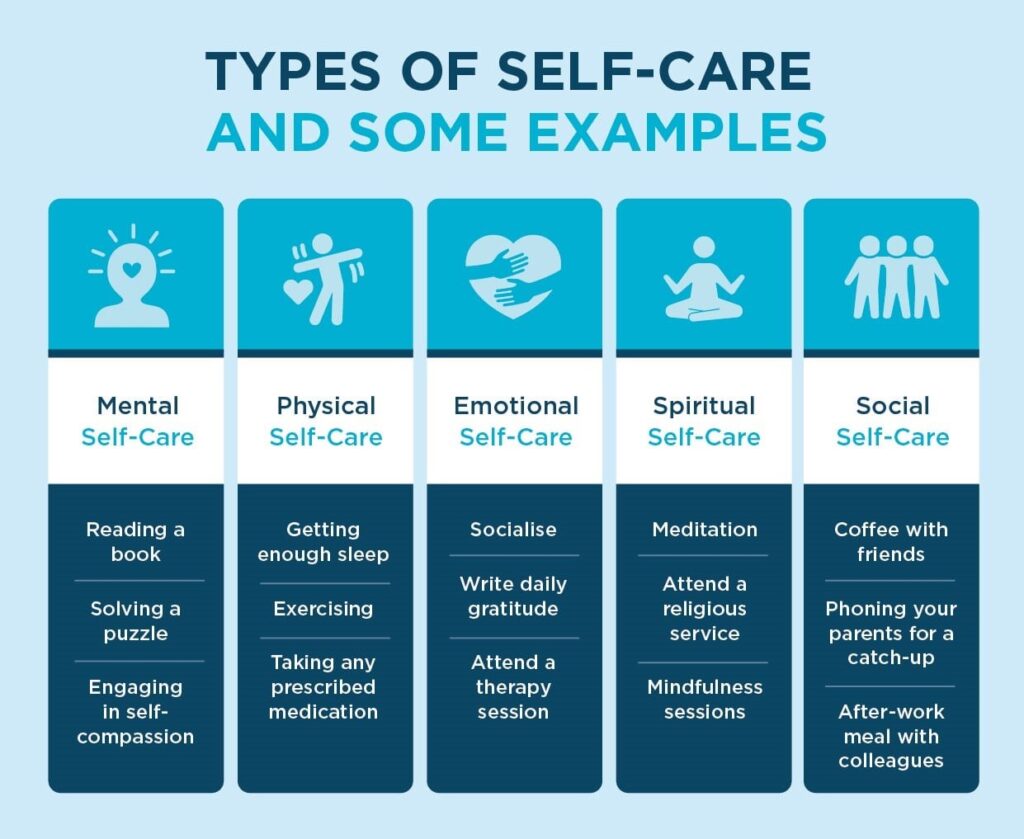
January 29, 2024


KEY ACCOMPLISHMENTS, CHALLENGES, AND FOCUS AREAS
Last Week’s Accomplishments:
- Operations
- Helped advance the delivery of life-altering care for ~8,100 people last week!
- Patients helped came in 1% above plan
- Maintained negative or zero backlog in three teams. Keep it up Team 13, Team 11 and Team 7
- Operation Managers successfully completed their first Quarterly team KPI report out to the Executive team. Well done Managers!
- Customer Success
- Held remote quarterly business reviews with Jewish Hospital Transplant and Mayo Clinic Jacksonville Transplant
- Attended 2024 eHealth Technologies Sales Kick-Off
- Technology
- Overall system uptime came in at 99.995% against a plan of 99.995% with no major outages or downtime.
- Microsoft and SalesForce experienced platform instability over the course of the week. No outages occurred because of these partner challenges, the team adapted and optimized systems to ensure they remained online.
- Product Management
- Conducted 2024 Product Planning
- Established OKRs for 2024
- Established Product Portfolio
- Progressed expedited records with networks
- Gained access to portal for Operations
- Progressed expedited records with Release of Information (ROI) vendors
- Began MRO portal pilot
- RequestAPI – discussed timeline and approach of go live with Sales
- 7 prospective clients
- 1 client in final negotiations (Johns Hopkins)
- 1 client identified as a sales priority for quick integration (AccessHope)
- Conducted 2024 Product Planning
- Sales
- Successfully completed 2024 Sales Kick Off for the Commercial Team
- Finalized negotiations with Frenova, final agreement review planned for 1/29 with 1/31 signature planned
- Planning Tampa General / Moffitt Cancer onsite meetings
- Released UVA / Emily Curic Cancer Center Case Study
- Human Resources
- Met with DEI & Engagement Committees and outlined 2024 path forward
- Set calendar for 2024 Wellness Programming
Last Week’s Challenges:
- Operations
- Patient volume came in 6% above plan
- Closed locations / person / day came in at 9.2 compared to a forecast of 9.7
- Turnaround time decreased to 7.1 days
- Operations Backlog increased by 900 cases but most of the backlog is with three teams. City of Hope (across 12a,b,c makes up 28% of the overall backlog). Escalation has taken place and City of Hope has acknowledged that they are the problem and have committed to provide accurate forecasts moving forward. Backlog is now sitting at 5,600 cases. Below is where the current backlog is located:
ALL 18 TEAMS

TEAMS CONSOLIDATED BY CUSTOMER

- Sales
- Did not close Frenova Renal Research as expected. Expect to close this week.
- Received proposal from City of Hope that included all requested terms except for removal of termination for convenience and did NOT include a commitment to minimums.
- Technology
- SalesForce sync with Operations Intake experienced instability. Working with vendors to ensure that systems are stable and reliable.
- Microsoft platform experienced instability in core functions. Team was able to scale infrastructure to accommodate for the challenge.
This Week’s Focus:
- Operations
- Continue to keep urgency up on closing cases to decrease excess backlog and get turnaround time down
- Continue to meet Team based CL/D/P goals each day
- Receive Imaging Manager feedback on 2024 Imaging Roadmap draft
- Implement Northwestern split from Inova, Ochsner, and Advocate
- Sales
- Receive signed Frenova Renal Research Agreement by 1/31
- Finalize negotiations with City of Hope
- Prepare for ACE events beginning 2/4 – Finalize prospect / client dinner scheduled for 2/4
- Finalize presentation for Association of Cancer Executives speaking engagement with Blake Herring, Oncology Administrator at UVA.
- Customer Success Management
- Hold remote quarterly business reviews with Rush Surgery and Urology, St. Lukes Transplant, UC Davis Neurology
- Hold onsite quarterly business reviews with Northwestern Oncology, Neurosurgery and Bluhm Cardiovascular
- Launching NYP Melanoma
- Review January incoming volume and update demand model
- Complete reach out to eHealth Technologies detractors
- Technology
- Focus and accelerate technical aspects of the Expedite Records with Networks and MRO pilots, and RMS to cloud project
- Product Management
- Continue to focus on and progress expedited records projects (with networks and with ROI vendors)
- Human Resources
- Continue to update job descriptions for all roles across the organization
- Select Learning Management System
- Review India and & US Handbook
- Finalize and communicate action plans for India team members requests
- Executive Leadership Team
- Align on strategic plan that allows eHealth Technologies to deliver in the short and long-term
- Objectives and Key Results
- Enterprise Risk Management
- Competitive Analysis
- Product Roadmap
- Training Roadmap
- Office Roadmap

REMINDER – CALL FOR COMMITTEE MEMBERS!
As we kick off 2024, we are looking to add a handful of team members to each of our committees. We have three committees that work behind the scenes enriching many aspects of our experience here at eHealth Technologies. We provided an overview of our Cares, DEI, and Engagement committees in last week’s update, if you are interested in joining, please send an email to your manager and Amy Halter outlining which committee(s) you are interested in joining and why. All committee members must meet the performance requirements for their role throughout their tenure.
THIS WEEK’S OBSERVANCES

February is Black History Month
In 1915, historian Carter G. Woodson founded the Association for the Study of Negro Life and History (ASNLH), now known as the Association for the Study of African American Life and History (ASALH). The organization is dedicated to researching and promoting achievements by African Americans and other people of African descent. Since its inception, ASALH has promoted year-round and year-after-year study of African American history.
The group launched Negro History Week in February of 1926 as a coordinated effort to develop lessons and encourage the teaching of Black history across the nation’s communities and public schools. In time, mayors and other leaders issued annual proclamations recognizing “Negro History Week” and many communities expanded beyond weeklong activities. Public intellectuals, church, and civic organizations, the Black press, politicians, and historians promoted the initiative, which evolved in the 1960s amid the national discourse on race and identity.
Seeking to bring even more stories of African Americans to light, in 1926, Woodson founded the first Negro History Week. Woodson chose February for reasons of tradition and reform to coincide with Abraham Lincoln and Fredrick Douglass’s birthdays. Both men were symbols of freedom. Woodson also built the Negro History Week around a time traditionally spent reflecting the Black heritage.
Other countries devote a month to celebrating Black history such as Canada and the United Kingdom. Canada and Germany celebrate in February, but countries such as the United Kingdom, Ireland, and the Netherlands recognize their own celebrations of the contributions of Africa, Africans, and people of African descent in October. In Belgium, Black History Month is held in March.
Interested in how you can be involved? Here are 29 Ways You Can Participate in Black History Month.

SELF MOTIVATION
Adapted from How to Motivate Yourself: 11 Tips for Self Improvement | Coursera
Setting a goal—anything from getting a degree or landing a new job to achieving a new level of physical fitness—is a big step toward improving your life. But following through to achieve what we’ve set out to accomplish can be challenging, especially on those days when motivation wanes. So how do you follow through on your commitments during those times when you just don’t feel like putting in the work?
We all lose motivation from time to time. When you’re feeling unmotivated, try one of these science-backed strategies to get yourself back on track toward your goal.
- Put your goal on the calendar.
- Make working toward your goal a habit.
- Plan for imperfection.
- Set small goals to build momentum.
- Track your progress.
- Reward yourself for the little wins as well as the big ones.
- Embrace positive peer pressure.
- Practice gratitude (including for yourself).
- Do some mood-lifting.
- Change your environment.
- Remember your “why.”
Let’s take a closer look at some of the above tips. Since we have already shared a few lessons on setting goals (you may recall SMART Goals, and the GROW method shared in part weekly updates, we’re going to focus this lesson on strategies 6-10 related to motivation. Here, we’ll break down these self-motivation techniques, detailing what they are and the science behind them.
6. Reward yourself for the little wins as well as the big ones.
It feels good to be rewarded for our work. But rewards can also improve motivation and performance. Rewarding yourself for reaching small milestones and completing big goals could boost your interest and enjoyment in the work you’re doing.
These rewards don’t have to be big or cost a lot of money. Here’s a quick list of ideas you could use to reward yourself:
- Take a short break.
- Go for a walk outside.
- Enjoy your favorite snack.
Spend a few minutes making your own reward list so that you’re ready to celebrate your wins, big and small.
7. Embrace positive peer pressure.
You’re ultimately the one who puts in the work to achieve your goals. But other people can be a great motivator. Research shows that feeling like you’re part of a team can lead to boosted perseverance, engagement, and performance, even if you’re working alone. Depending on your goal, this might mean joining a study group, running team, gym class, professional organization, or virtual challenge.
Another study suggests that sharing your goal with someone whose opinion you value can strengthen your commitment to attaining that goal. For work goals, consider sharing with a mentor or supervisor. You might choose to share educational goals with a teacher or academic advisor, or fitness goals with a coach or fellow gym member who you admire.
8. Practice gratitude (including for yourself).
It might seem like gratitude would lead to complacency and acceptance of the status quo. Yet some studies have shown otherwise. Feelings of gratitude can:
- Motivate self-improvement.
- Make us feel connected to others (i.e. part of the team)
- Enhance motivation across time, beyond the duration of the gratitude practice.
- Induce a sense of wanting to give back.
- Improve physical and mental health, as well as sleep.
There’s more than one way to foster an attitude of gratitude. Spend the first five minutes after you wake up going through all the things you feel grateful for. Better yet, write them down in a gratitude journal. Is there someone in your life you’re particularly grateful for? Write them a letter expressing your thanks.
9. Do some mood lifting.
A good mood has been linked to increased productivity and improvement in both the quality and quantity of work. This doesn’t mean that you must be positive all the time—that’s not realistic. But if you’re feeling sluggish about working toward your goal, a quick mood lift could be enough to get you started.
10. Change your environment.
Sometimes a change of scenery can help you approach your task with fresh eyes (and a new sense of motivation). This is called the novelty effect—a short-term boost that comes from altering your environment.
11. Remember your “why.”
Why is this goal important to you? Why is that reason important to you? Why is that important to you? Keep digging until you get to your ultimate “why”—the core value that’s driving your goal.
To further reinforce your “why,” set an alarm every morning to remind yourself to spend one or two minutes visualizing what success would look like. What would it feel like to achieve your goal?

PRACTICING SELF-CARE

All this talk of self-care, but how to make the time?
We’re all working full-time, and life itself is generally busy. A few days a week, you catch yourself eating what is cheapest or nearest to save time and energy. You skip your workout to meet an upcoming deadline. Sound familiar? Here are 7 tips to help you initiate and maintain a routine:
1. Listen to the cues
Our physical and mental experiences are interdependent. Your body may be sending you messages about your stress level that indicate you need more self-care.
Some signs include, but are not limited to:
- You have trouble falling asleep or staying asleep.
- You feel fatigued most of the day.
- Your appetite is much more intense or much less intense than usual.
- You experience either constipation or diarrhea.
- Your thoughts race or blur, making it difficult to focus.
- You feel irritable or snap easily at co-workers, peers, or strangers.
- You feel more impatient than usual.
- You feel more nervous than usual, leading to increases in habits like biting your nails, tapping your pen or feet during meetings, or fidgeting.
- You smoke, drink, or engage in other substance use more than usual.
- You isolate or socialize significantly more or less than usual.
- You begin feeling less interested in your daily activities, or wonder what is the point?
Some of these signs are more obvious than others. The first step is to objectively notice how you are feeling or behaving, how intense those feelings or behaviors are, and how often they occur.
Once you become more familiar with noticing these sensations, you may want to create a journal or use an app to track what you are feeling, thinking, and doing. Check out Refinery29’s suggestions for anxiety tracking apps. If you are more interested in tracking your sleep, eating habits, exercise, or other metric, a quick Google search can help you find the mobile tools for your needs.
By following the next two steps, you will create more opportunities to hear and listen to your body’s signs on your own.
2. Set aside 10 minutes in the morning
If we are not careful, we can miss what our body is telling us. Mindfulness can help us hear and understand. Mindfulness is proven to lower stress, increase self-awareness, increase body awareness, improve performance, protect against mental illness, increase focus, improve emotional processing, help regulate emotion, increase compassion, decrease feelings of loneliness, improve sleep, and more.
With practices like meditation and mindfulness, consistency is key. Studies show that 10-15 minutes of mindfulness practice a day will lead to results. Try an app like Insight Timer (some people prefer Headspace), and meditate for 15 minutes. Note: You do not need an app or other materials to meditate. You only need yourself, a relatively comfortable seated position, and a relatively quiet, private space where you will not be externally prompted or disturbed.
You also do not need to be an experienced meditator. Written and audio resources and in-person meditation groups may also guide you in the beginning of your practice.
Gradually, you will be able to practice independently of guides and tools. This practice will strengthen the communication between your body and your mind. Accordingly, over time, you will be more aware more quickly of the messages (like in Tip 1) that your body may send you about its needs before the needs become emergencies.
3. Invest in yourself
Sometimes, you need an external influence to help facilitate your self-care. The best approach to self-care is to initiate your practices and routines from a place of strength and stability to proactively prevent crisis. This is where therapy comes in. You may have some questions or concerns about therapy. Here are BuzzFeed’s 25 ways therapy can help you.
A good therapist will help you familiarize yourself with the internal roots and workings of your thoughts and behaviors. You will recognize patterns in yourself and better anticipate how your past and present impact you now and in your future. Therapy is not intended to eradicate all sadness or a full range of emotions. Rather, you will build the skills to observe, weather, and accept any storm. If therapy is not your self-care method of choice, perhaps you would benefit from a personal trainer, a dietician, or a coach.
4. Treat 2-3 workouts a week like work meetings
Regular exercise has been shown to improve your mood and decrease feelings of anxiety, depression, and stress, increase the production of endorphins, assist with weight loss and maintenance, strengthen your muscles and bones, increase your energy levels, reduce risk of chronic disease, improve skin health, improve brain health and memory, improve sleep quality and relaxation, reduce pain, and more. Making time for exercise can feel next to impossible some days. Try finding a time in your schedule that you do not regularly have other conflicts. Say you meet with your supervisor on Tuesday evenings, your co-workers usually go out together on Thursdays, and your friends tend to gather on Friday nights. Commit an hour on Monday and Wednesday night and Saturday afternoon to do something active. Put recurring events in your calendar. Treat appointments with yourself like work meetings. Incentivize your following through (for example, treat yourself to a smoothie after your workout, or put $5 toward the shoes you are eyeing every time you go to the gym).
5. Cook healthy meals in advance
Greatist outlines 45 surprising benefits of exercising and eating healthy. Among the many, eating well can brighten your mood, protect your bones, strengthen your fertility and immune system, boost your cognitive capacity, improve your skin health, heighten your sex drive, reduce insomnia, soothe sore muscles, give you energy, and reduce your cravings for unhealthy food.
Like working out, finding the time and budget for eating well can feel like an insurmountable challenge. Counterintuitively, eating well can save you time and money.
Try preparing a week’s worth of healthy food at the onset of your week so that you can easily reheat at work for lunch or after work for dinner. Below are 5 healthy recipes from Eating Well you can try:
- Chickpea Curry
- Seared Salmon with Pesto Fettuccine
- Beet & Shrimp Winter Salad
- Chicken & Spiced Apples
- Mozzarella, Basil and Zucchini Frittata
6. Commit to something that brings you joy
Most self-improvement suggestions require an investment of hard work and money. This time, I recommend you commit regularly to something that makes you feel good. Joy and laughter are medicinal. Medical Daily shares that laughter increases serotonin and endorphins in the brain, replenishes the lungs, relaxes muscles and eases tension in the body, reduces stress hormones in the body, protects the heart, strengthens the immune system, and functions similarly to a really good workout. Laughter also relieves everyday worry and stress, adds positivity and resilience to life, improves overall happiness and mood, and helps ease worry, anxiety, and fear.
Ensure you have at least 30 minutes of joy on your calendar every week. Work up to at least 30 minutes a day.
7. Try and try again — with patience.
You may not yet know what stress management tools work best for you. Humans are unique. What works for one does not always work for another. Often, variations to the mold are in store. Moreover, breaking old habits and creating new ones is often harder than we first think.
On average, it takes 66 days to form a new habit. Using the guidance above, choose one change you would like to commit to. Plan to implement that change for 10 weeks. After 10 weeks, evaluate whether the tactic resonates with you.
Leaning on objective third parties and support systems is helpful during this time. A trusted friend or therapist can make all the difference in evaluating change, processing your learnings, and holding yourself accountable.
You may find the habit is so natural you have no desire to return to how you were doing things before. Or you may find the new habit is harder than you realized or does not resonate with you. You may supplement the first choice with an additional shift or try something else entirely.
Throughout the growth process, practice patience with yourself. Old habits are hard to break, and new habits are even harder to create. Change is challenging. Moments of joy and celebration may come with moments of frustration or doubt.
Prioritizing time for self-care in a busy week is a worthwhile challenge. By following these tips, you’ll be able to focus on your well-being and set yourself up for personal and professional success.
Credit: 7 Tips for Self-Care During a Busy Work Week (mywellbeing.com)